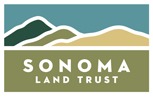
Sonoma County, a Biodiversity Hotspot
By Kyle Pinjuv, Conservation Easement Program Manager
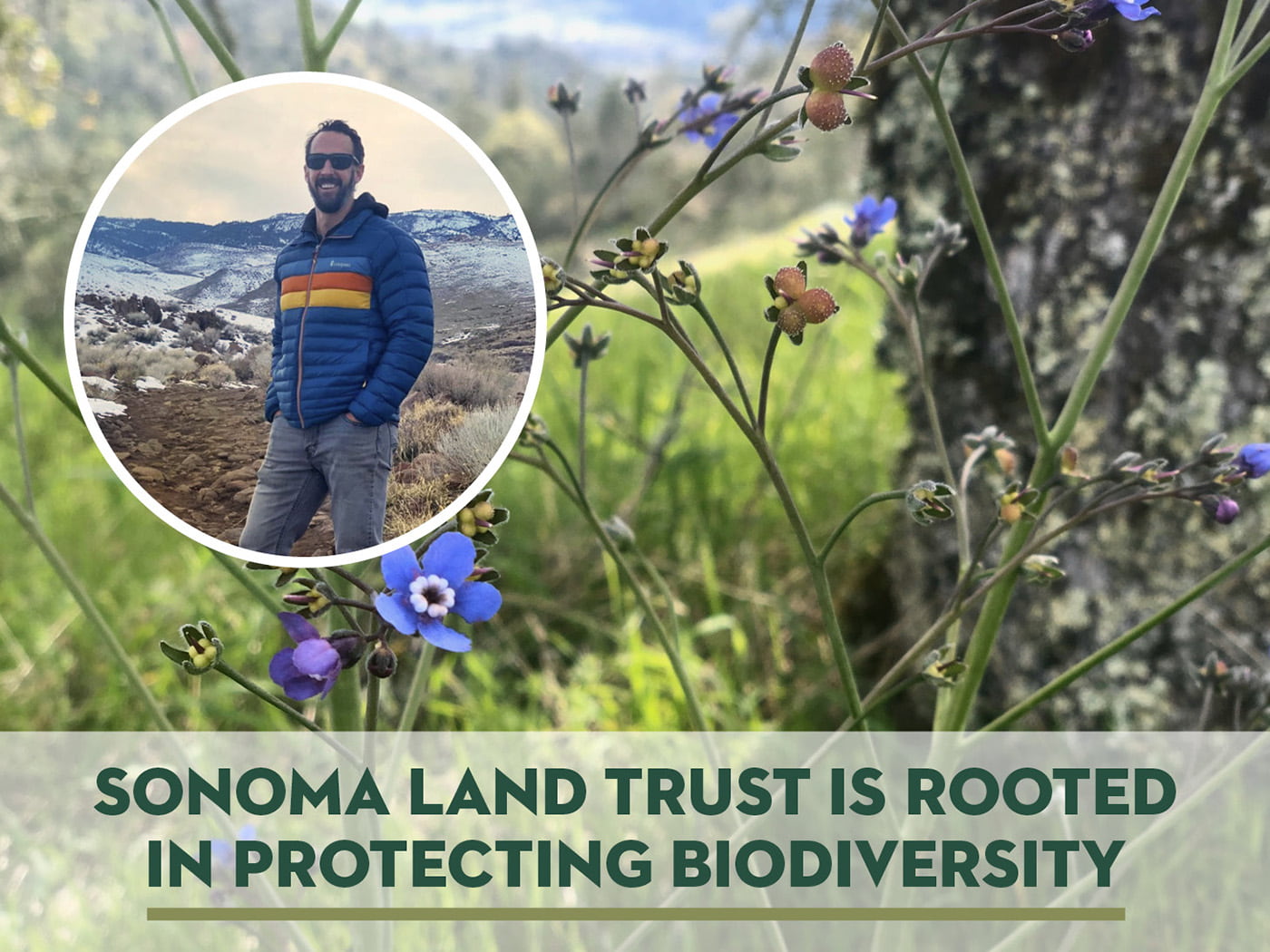
You often hear the term “hotspot” used when describing Sonoma County but what exactly does this mean? Think of it this way, we live in a region with an incredible variety of living things. Biodiversity Hotspots are identified as areas that have the richest and the most threatened reserves of plant and animal life on earth. They are not evenly distributed around the planet and together, the the 36 designated hotspots make up 2.3% of the Earth’s land surface and are home to nearly 44% of all plant species Most of these plant species are found only within their native regions.
To qualify as a biodiversity hotspot, a region must meet two strict criteria: it must contain at least 1,500 species of vascular plants (e.g., ferns and redwood trees) found only in their region; it must have lost 70% of its original native habitat. A hotspot, in other words, is more productive and supports a wider variety of life. They are interconnected across the planet and are not isolated areas.
Sonoma County is located within one of the five Mediterranean-type climate (MTC) regions in the world. The MTC regions relate specifically to the lands on our planet with an abundance and diversity of plant and animal life that lie along a band of the earth with common climate and geographic characteristics. The five regions are the Mediterranean Basin, central Chile, the Cape Region of South Africa, southwestern Australia and California. Our region is also known as the California Floristic Province, and stretches from southern Oregon to Northern Baja California. MTF Regions share a climate where cool, wet winters and warm, dry summers are normal cycles. These areas cover only 2.2% of the world land area, but are home to approximately 20% of all of the plant species in the world.
Situated within the California Floristic Province and having a rugged geography from coastline to mountain top means that the 1 million square acres that Sonoma County occupies, contain a dense representation of habitat types that are found throughout the entire California MTC! These factors combine to make it one of the most biologically diverse areas in the world.
Hotspot designations further the importance of our local land conservation efforts throughout the state of California and Sonoma County in particular. The Sonoma Land Trust actively works to ensure the plant and animal species found throughout the County continue to thrive through our land acquisition, stewardship, and community outreach and education programs.
We encourage you to learn more about the biodiversity that surrounds you by joining us on a guided hike or a self-guided adventure on one of our favorite trails.
Sonoma Mountain Vernal Pools—Ecological Preserve
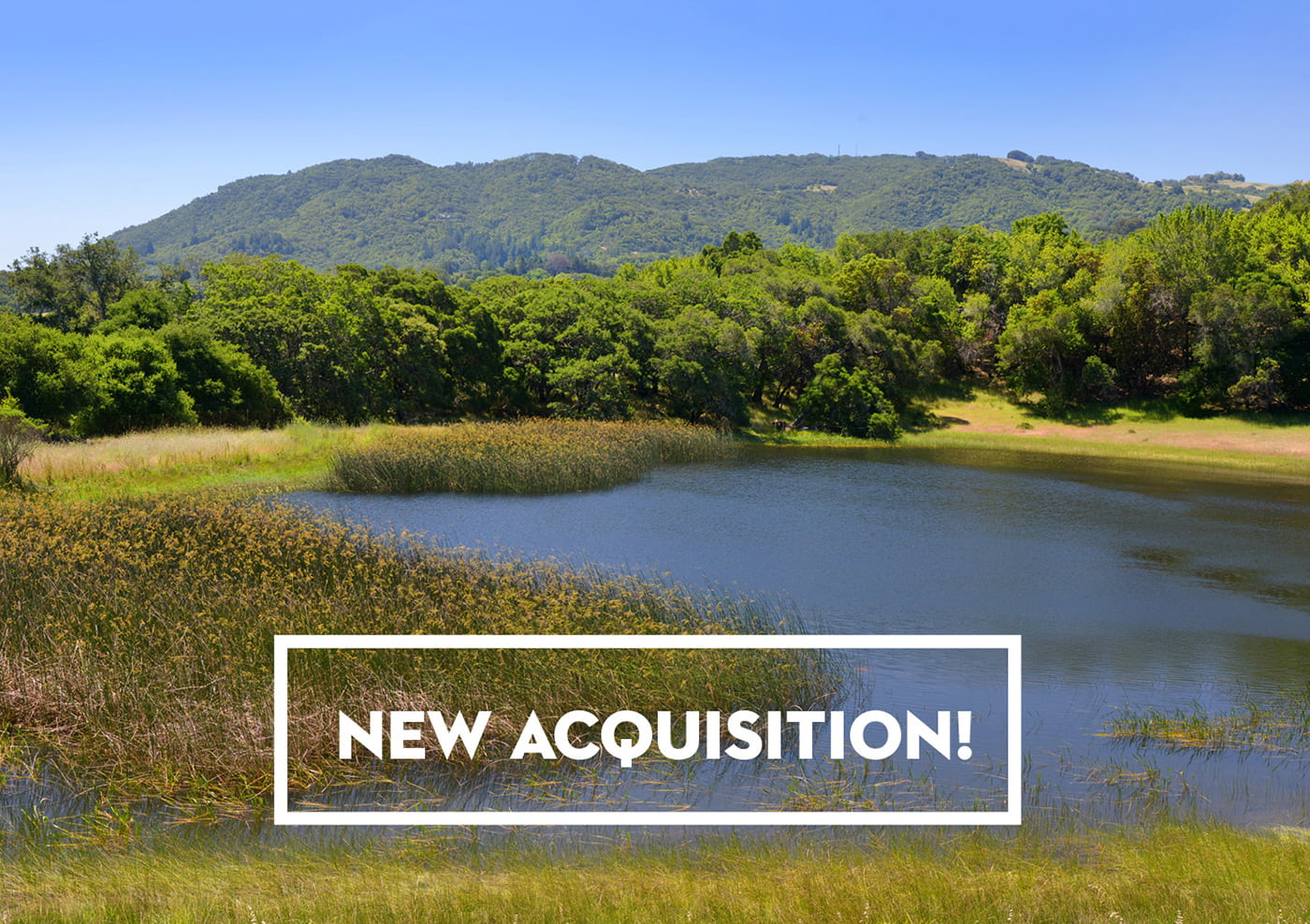
We are thrilled to announce that on March 10 we purchased a 174-acre property located on Bennett Valley Road, adjacent to Trione-Annadel State Park. The property, known as the Sonoma Mountain Vernal Pools, protects a biodiverse area with rare and threatened plant species, seasonal vernal pools, and a significant portion of an important wildlife corridor. As a partner in the project, Sonoma County Ag + Open Space has purchased a “forever wild” conservation easement on the property, which will ensure the conservation of its vast and diverse natural resources for generations to come. This purchase was also generously supported by the Gordon and Betty Moore Foundation, the State Coastal Conservancy, the California Natural Resources Agency and several private donors. Learn more about the property and about our guided tours by visiting www.sonomalandtrust.org/vernal-pools
Biodiversity through a photographer's lens
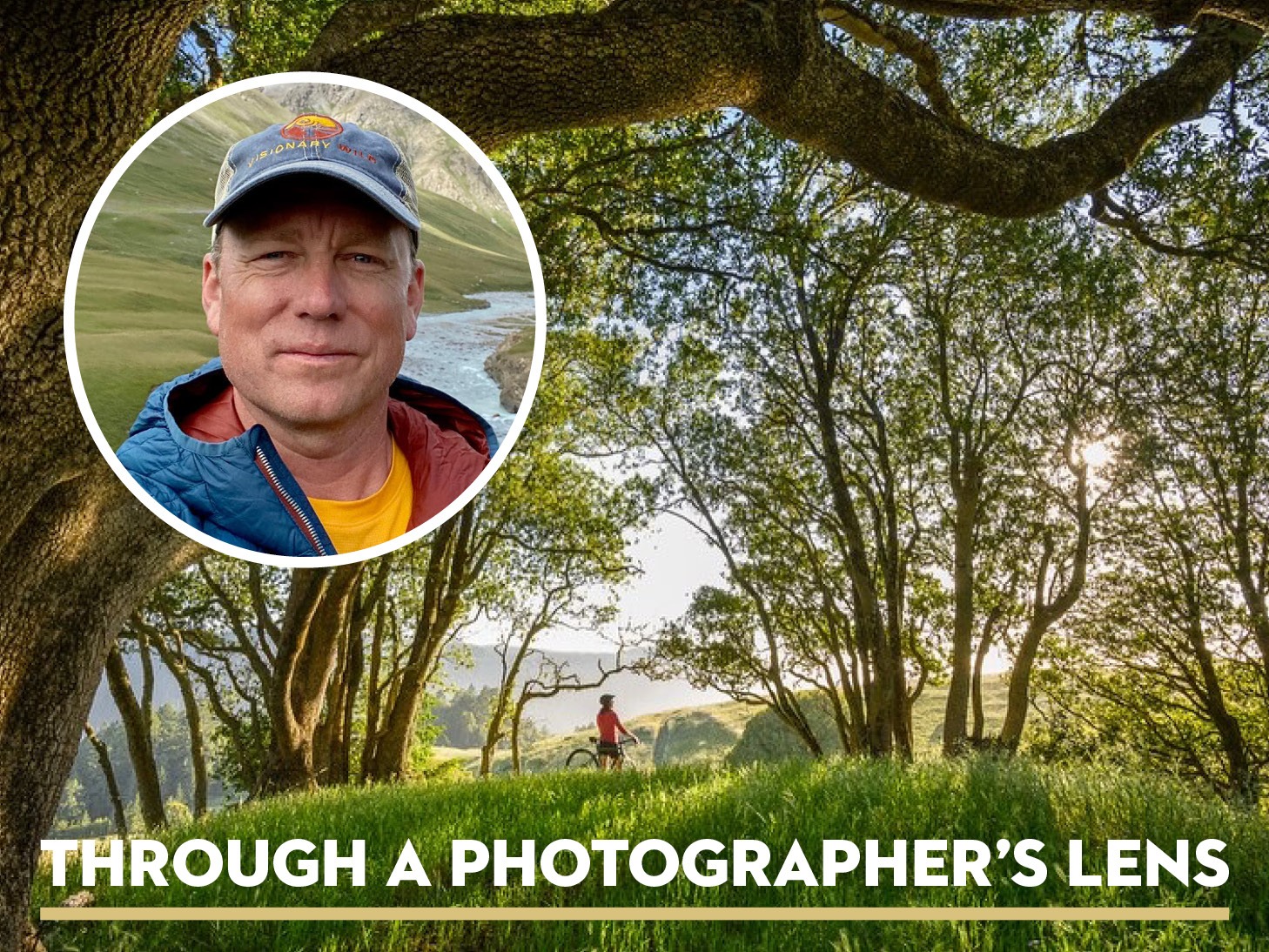
Photos: Jerry Dodrill
It has been said that the whole point of travel is to see your home as a distant land. After having spent the past quarter century guiding nature photography tours and expeditions around the world, I feel this sentiment every time I cross the bridges that lead back to our home here in Sonoma County. The cool fog and humid air fill my lungs with familiar aromas of the sea, oak, fir and pepperwood. I’m drawn back much like the steelhead and salmon that return to tributaries from which they were born.
If I never left the area, I probably wouldn’t fully appreciate the uniqueness of our grand landscape; from the bay’s swampy marshes, redwood forests, craggy coast and lofty summit of Mt. St. Helena. Sure, I love visiting the glaciated peaks of the Tien Shan, the depths of the Grand Canyon, dunes of Death Valley and so many other interesting places, but it is impossible for a visitor to gain a meaningful understanding of a place without watching it change over time. There really is no place like returning home, especially when the land is teeming with life in so many ways. Here we are able to witness a vast array of unique environments and an incredible cross section of eco-zones which for an artist or keen observer of nature means a visual diversity that is defined by biodiversity.
As I explore with the lens, seeking compositions that embody an essence of a place, I look for the subtle visual characteristics that define the landscape. I ask: How is this place different than other places? What plants, animals and people live here now, or in the past? What nutrients enrich the soil and allow a density of species that shape how this place looks? The camera is a silent companion that lets me record subjects and share special moments which either reveal themselves as unexpected gifts, or as the result of much planning and pre-visualization. My photographs are expressions of a lifetime of outdoor adventure and a celebration of those who work tirelessly to preserve our natural environment. I was blessed to grow up in Sonoma County and have applied the lessons learned here to experiences around the Earth. The artist’s eye constantly scans the landscape searching for meaningful observations and juxtapositions that represent the natural truths that surround us.
Though it is widely known as California’s Wine Country, it’s the Wild Country that really excites me. The French word “Terroir,” generally associated with the complete natural environment in which wine is produced comes to mind, as this is relevant not just in our world-renowned viticulture industry, but in the very make-up of who we are and what we prioritize as a community. The numbers tell the story best: Sonoma County has close to sixty thousand acres of vineyards (which is a lot), but more than two hundred thousand acres of preserved wild land and open space. As we move forward in time, it is critical that we consider the terroir of home – the entirety of our home environment – and strive to find balance between the progression of man and the needs that sustain a fragile life on this planet.
Sonoma’s Robust Diversity through the eyes of a Naturalist By Sarah Reid
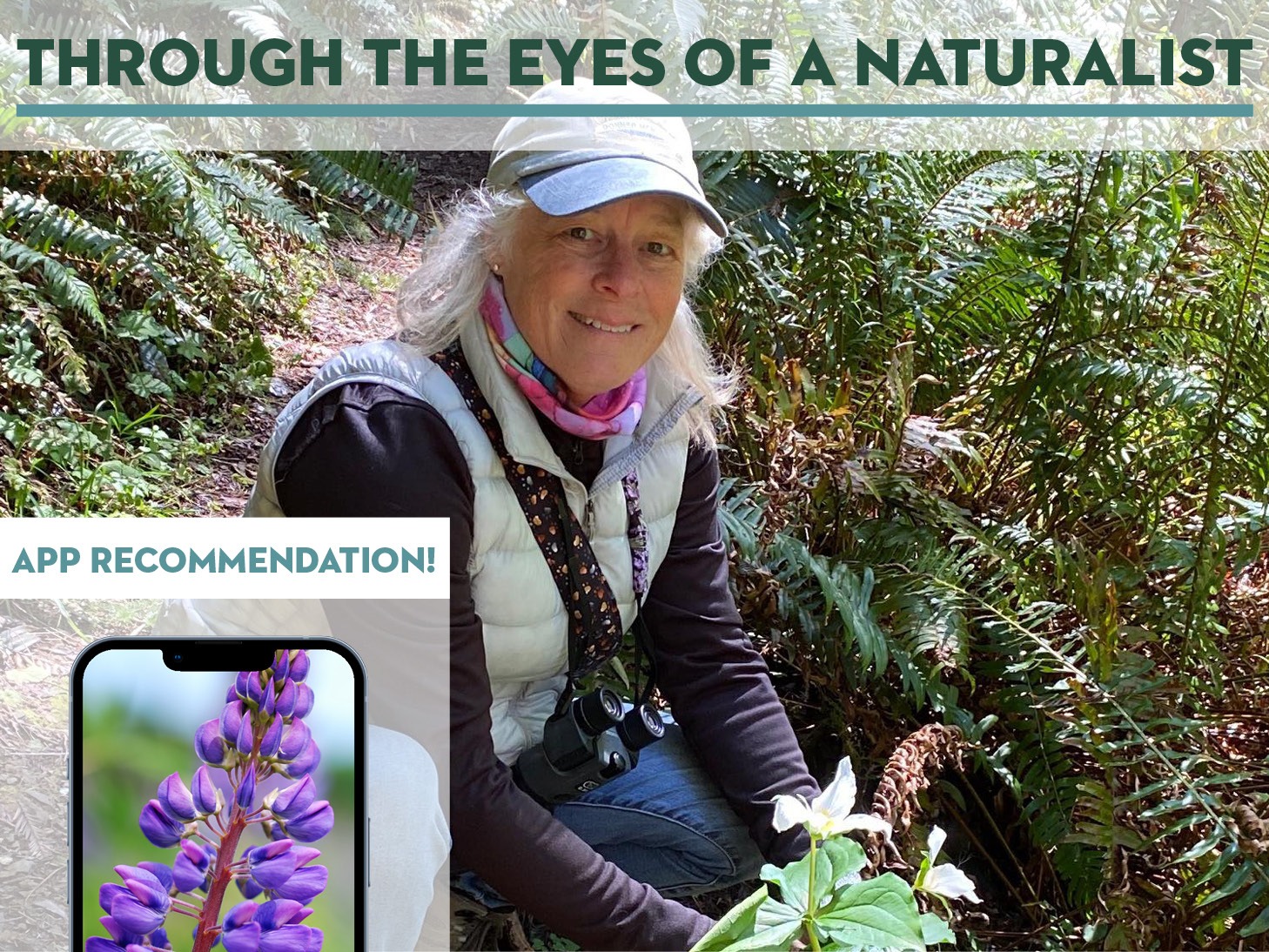
Photo: Sarah Reid
There are few other places in California, even in the United States, that could boast the variety of ecosystems and habitats that exist in Sonoma County. One of the wonderful things about Sonoma County is that anyone can experience this diversity at our public parklands, beaches, and nature preserves. Within our county’s 1,500 square miles, we experience grasslands and dense redwood forests, ocean tidepools and serpentine outcroppings, volcanic structures, and subduction zones and three rivers. Each possess their own flora and fauna specialized to thrive in their environments. For me, this place is a paradise with endless opportunities to explore and uncover thousands of extraordinary living things that share this place with us.
Take for example our wildflowers. One could spend a lifetime just studying the varieties of wildflowers in Sonoma County – we have over 2,000 unique species to choose from!
A fun tool I use when out exploring is a free app on my smartphone called iNaturalist. This app was developed by California Academy of Sciences and National Geographic Society to collect and share information about the plants and animals on our planet. Anyone can record their observations providing data to researchers, scientists, and curious folks like me. An iNaturalist observation provides a location, date, time, images, and sound recordings that users document using the camera and speakers on their phone. Observations are reviewed for accuracy and can be compiled with others to provide a more robust and in-depth data set for the location over a period of time. This is especially helpful when tracking the effects of climate change.
Want to try this yourself? Here is an easy-to-follow process:
- If you see a redwood tree and you know it is a Coast Redwood, take a photo of the whole tree if you can, then a close-up of the leaves/branch and cone.
- Once you add the images and species name as an observation, the program will identify it as a “Redwood”, but you can further confirm that it is a “Coast Redwood” because you know that they live here differentiating it from the Giant Sequoia of the Sierras.
- Then you can test your Latin by learning to speak the scientific name (Sequoia sempervirons) and explore other details about where they are found, their conservation status, taxonomy and more.
You can then take your news skills and apply them to a project such as the Jenner Headlands Preserve, protected in collaboration of Sonoma Land Trust and The Wildlands Conservancy. This iNaturalist project includes observations of the 400+ living things within the Jenner Headlands Preserve property.
The result of such observations reveals the connections and the diversity of living things in one location. This time of year you may come across Viola adunca, known as the Hookedspur Violet or the variation, the Western Dog Violet, which are an important food source for the caterpillar which transforms into the Myrtle’s Silverspot Butterfly. These special butterflies are endangered partly because there are so few Western Dog Violet plants available. Through iNaturalist we can map where these plants appear and then work to protect and conserve them, and in doing so, ensuring the habitat for the Myrtle’s Silverspot Butterfly. By observing the butterfly itself, we can determine how the population is doing.
We can continue to protect and conserve lands here through organizations such as Sonoma Land Trust – indeed entrusting that into the future there will continue to be spaces and places for wildlife and wildflowers to thrive, providing us the life-giving air and water and nutrients we require to live happy healthy lives.
Using apps like iNaturalist, we can connect more deeply with nature. We can see the connections in nature. We can help foster the healthy connections between people and land. Making connections helps foster stewardship, and stewardship will help protect Sonoma County for future generations to come.
La robusta diversidad de Sonoma a través de los ojos de una naturalista
Biodiversidad:
“Variedad de especies animales y vegetales en su medio ambiente”
– Diccionario de la lengua española
Hay pocos lugares en California, incluso en Estados Unidos, que puedan contar con la variedad de ecosistemas y hábitats que existen en el condado de Sonoma. Una de las cosas maravillosas del condado de Sonoma es que cualquiera puede experimentar esta diversidad en nuestros parques públicos, playas y reservas naturales. En las 1.500 millas cuadradas de nuestro condado encontramos praderas y densos bosques de secuoyas, marismas y afloramientos de serpentina, estructuras volcánicas y zonas de subducción, 3 ríos y un lago de agua dulce. Cada lugar posee su propia flora y fauna única que prospera en el entorno. Para mí, este lugar es un paraíso con infinitas oportunidades para explorar y descubrir miles de seres vivos extraordinarios que comparten este lugar con nosotros.
Un ejemplo son nuestras flores silvestres. Uno podría pasarse toda la vida estudiando las variedades de flores silvestres del condado de Sonoma: ¡tenemos más de 2.000 especies únicas entre las que elegir!
Una divertida herramienta que utilizo cuando salgo a explorar es una aplicación gratuita para mi smartphone llamada iNaturalist. Esta aplicación fue desarrollada por la Academia de Ciencias de California y la Sociedad National Geographic para recopilar y compartir información sobre las plantas y los animales de nuestro planeta. Cualquiera puede registrar sus observaciones y proporcionar datos a investigadores, científicos y curiosos como yo. Una observación iNaturalist proporciona la ubicación, fecha, hora, las imágenes y las grabaciones de sonido que los usuarios documentan utilizando la cámara y los altavoces de su teléfono. Las observaciones se revisan para comprobar su exactitud y pueden recompilarse con otras para obtener un conjunto de datos más sólido y exhaustivo sobre el lugar durante un periodo de tiempo. Esto resulta especialmente útil para seguir los efectos del cambio climático.
¿Quieres intentarlo tú mismo? Aquí tienes un proceso fácil de seguir:
- Si ves una secuoya y sabes que es una secuoya costera, toma una foto de todo el árbol si puedes, y luego una foto de cerca de las hojas/ramas y el cono.
- Una vez que añadas las imágenes y el nombre de la especie como observación, el programa la identificará como una “Secuoya”, pero puedes confirmar además que se trata de una “Secuoya Costera” porque sabes que viven aquí. Son diferentes que las Secuoyas Gigantes de las Sierras.
- Después podrás poner a prueba tu latín, aprendiendo a pronunciar el nombre científico (Sequoia sempervirens) y explorar otros detalles sobre dónde se encuentran, su estado de conservación, taxonomía y mucho más.
A continuación, puedes aprovechar de tus nuevas habilidades y aplicarlas a un proyecto como el de Jenner Headlands Preserve, protegido gracias a una colaboración de Sonoma Land Trust y The Wildlands Conservancy. Este proyecto iNaturalist incluye observaciones de los más de 400 seres vivos de la propiedad Jenner Headlands Preserve.
El resultado de tales observaciones revela las conexiones y la diversidad de seres vivos en un mismo lugar. En esta época del año es posible que encuentres Viola adunca, conocida como violeta de espuela de gancho, o su variante, la violeta de perro occidental, que es una importante fuente de alimento para la oruga que se transforma en la mariposa Silverspot de Myrtle. Estas mariposas especiales están en peligro de extinción en parte porque hay muy pocas violetas de perro occidental. Con iNaturalist, podemos cartografiar dónde aparecen estas plantas y trabajar para protegerlas y conservarlas, asegurando así el hábitat de la mariposa Silverspot de Myrtle. Observando a la propia mariposa, podemos determinar cómo está la población.
Podemos seguir protegiendo y conservando las tierras a través de organizaciones como Sonoma Land Trust, confiando en que en el futuro siga habiendo espacios y lugares en los que prosperen la vida y las flores silvestres, proporcionándonos el aire, el agua y los nutrientes que todos necesitamos para vivir sanos y felices.
Con aplicaciones como iNaturalist podemos conectar más profundamente con la naturaleza. Podemos ver las conexiones en la naturaleza. Podemos ayudar a fomentar las conexiones saludables entre las personas y la tierra. Hacer conexiones ayuda a fomentar la administración y protección, y la administración y protección ayudará a proteger el condado de Sonoma para las futuras generaciones.
A Case for support
Mary Ellen Hannibal, translating science into stories.

Through her writing, Mary Ellen tells stories about how science is deepening our understanding of our complex and essential dependency on biological diversity, and the need to change (or perhaps more correctly rediscover) our relationship to nature.
“Born in fire, water, air, and rock, California’s ecosystems took shape over eons. From river to ocean, mountain to coast, the ongoing rave of life is sustained by interactions both intimate and grand. Humanity arises from our brethren plants and animals. Life begets life and we do not have ours without them. The gift we give back to nature is time and space to keep this beautiful world alive.” – Mary Ellen Hannibal
At Sonoma Land Trust, protecting biodiversity is critical to our mission of protecting the land and water of our county. As you think about your relationship with nature and how important biodiversity is, please consider supporting our work.
Events
Language of the Land
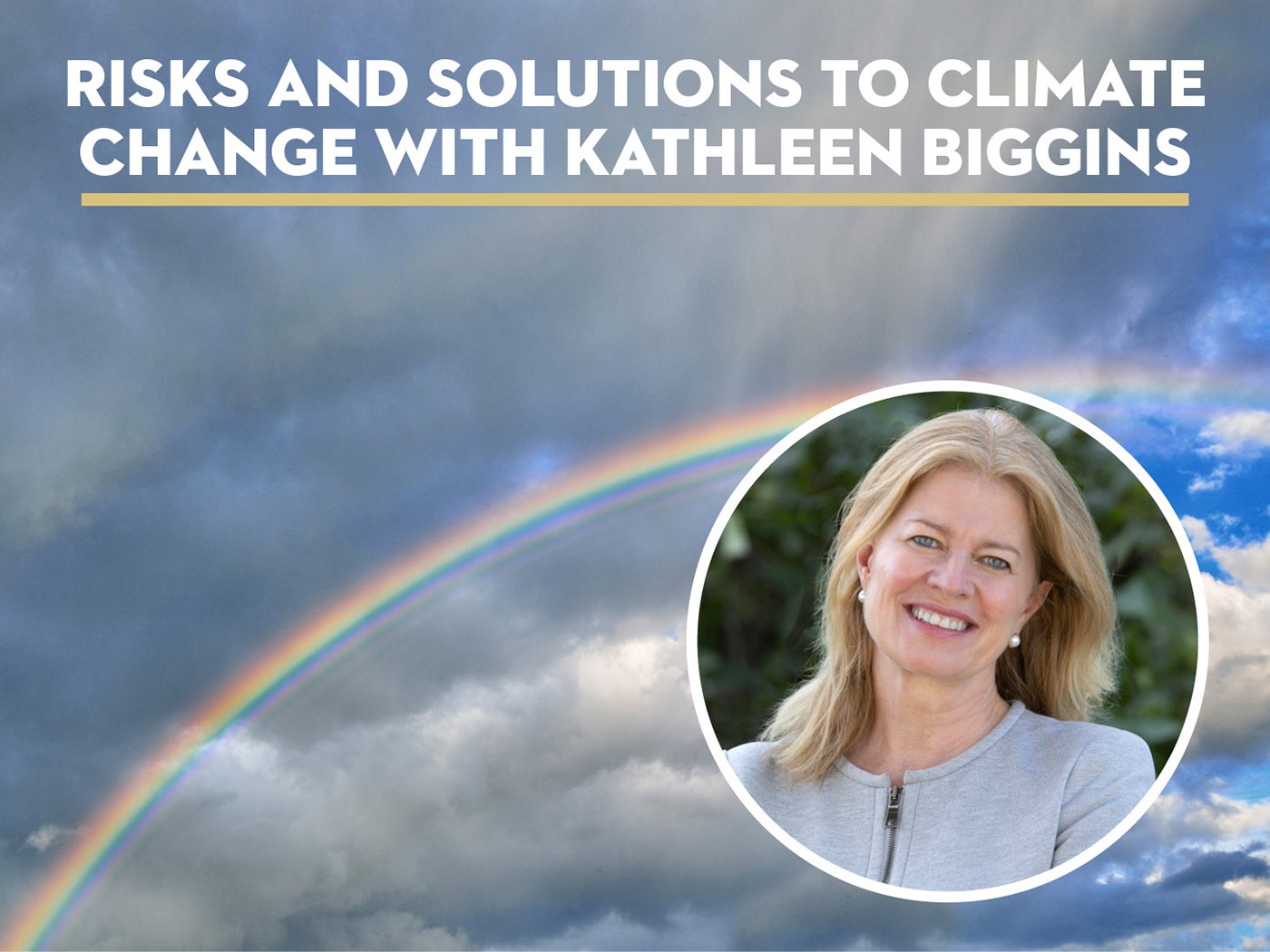
Did you miss guest speaker Kathleen Biggins of C-Change Conversations discuss the latest information about climate change? The C-Change Primer, a non-partisan, science-based, 360-degree view, provides a deep dive into the risks and potential solutions of this complex issue and what Sonoma Land Trust is doing to address it.
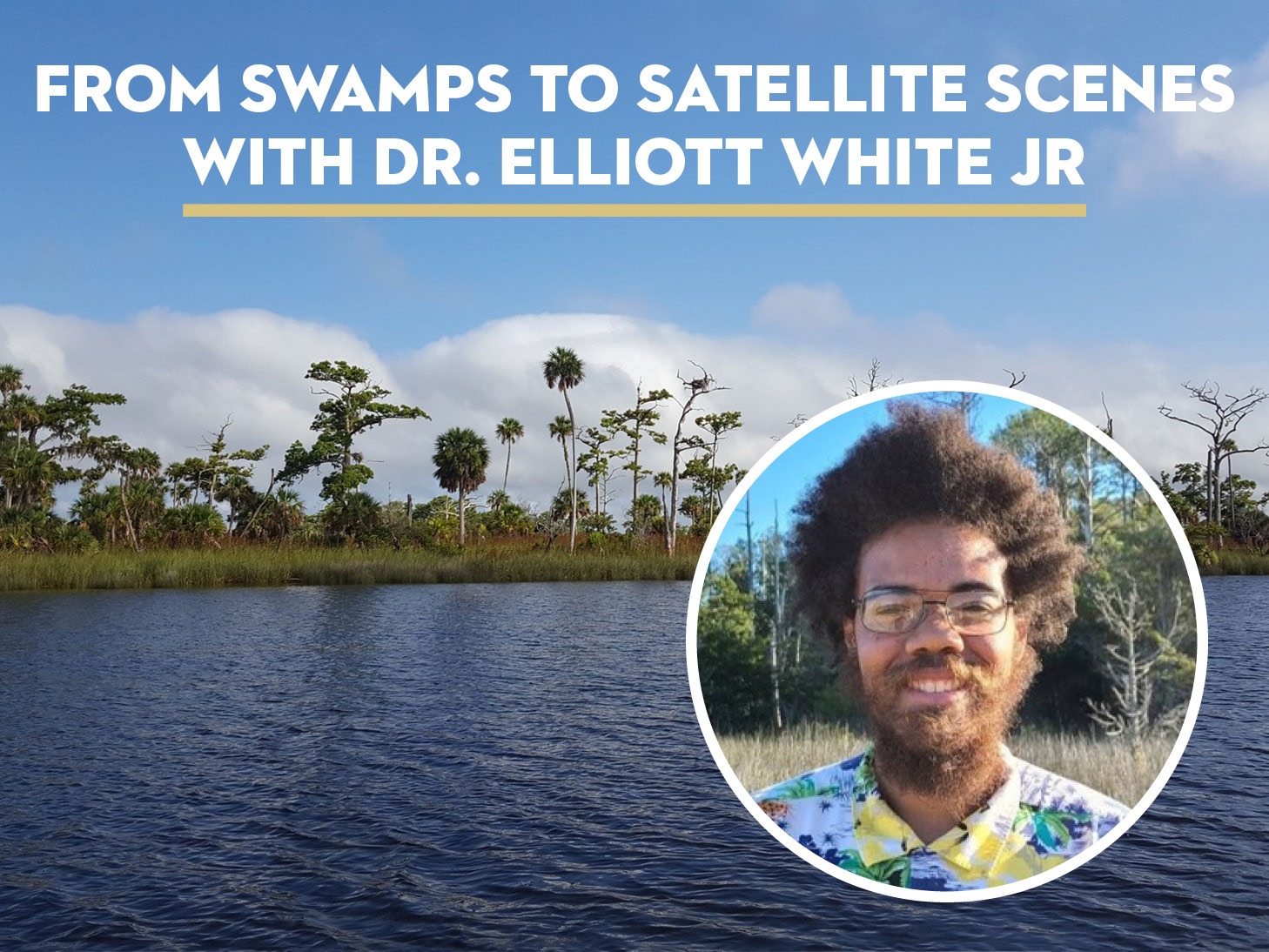
From Sauntering Through Swamps to Scanning Satellite Scenes
Tuesday, April 25, 7pm
Coastal forested wetlands are critical components of the coastal ecosystem mosaic; however, climate change threatens their existence. Remote sensing offers a powerful tool to examine this ecosystem at a broad scale, but there are challenges to using these data. Join us for a presentation by Dr. Elliott White Jr, Assistant Professor of Earth System Science at Stanford University’s School of Sustainability, to learn more about his approach to understanding the effects of climate change on coastal socio-economic systems.
De pasear por pantanos a escanear escenas de satélite
Martes, 25 de abril, 7:00pm
Los humedales boscosos costeros son componentes críticos del mosaico de ecosistemas costeros; sin embargo, el cambio climático amenaza su existencia. La teledetección ofrece una poderosa herramienta para examinar este ecosistema a gran escala, pero existen retos a la hora de utilizar estos datos. Acompáñenos en la presentación del Dr. Elliott White Jr, Profesor Adjunto de Ciencias del Sistema Terrestre en la Escuela de Sostenibilidad de la Universidad de Stanford, para conocer mejor su enfoque de la comprensión de los efectos del cambio climático en los sistemas socioeconómicos costeros.
Elliott White Jr. es profesor adjunto de Ciencias del Sistema Terrestre en la Escuela de Sostenibilidad. Es un científico de ecosistemas costeros que utiliza un enfoque interdisciplinar para comprender los efectos del cambio climático en los sistemas socioeconómicos costeros.
Free Public Hikes in Partnership with Sonoma County Ag + Open Space
There is no charge for these events, which are made possible by the voters of Sonoma County who fund the work of Ag + Open Space with a quarter-cent sales tax.
Estos eventos son gratuitos y son posibles gracias a los votantes del condado de Sonoma, que financian la labor de Ag + Open Space con un impuesto sobre las ventas de un cuarto de céntimo.
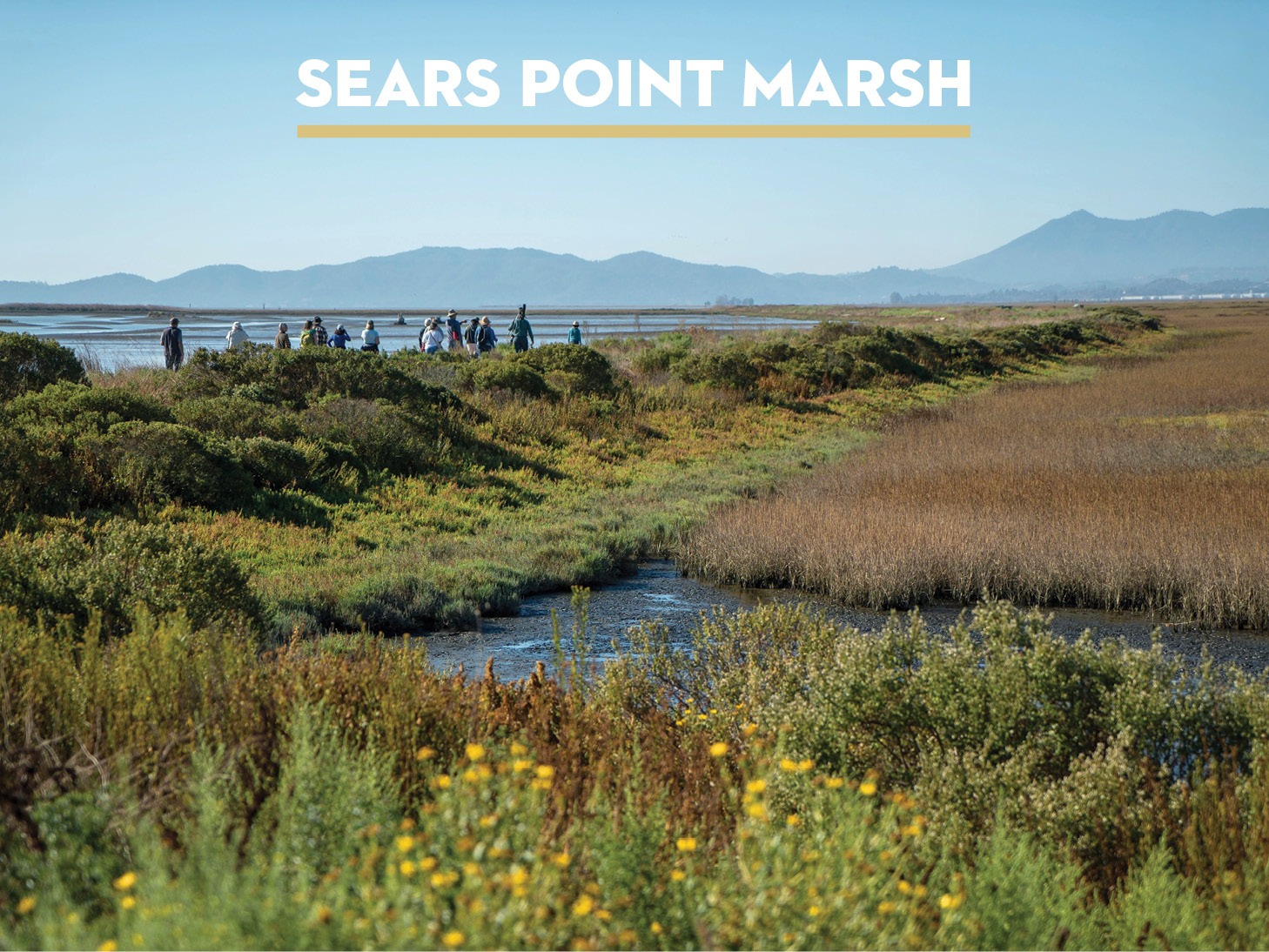
Sears Point Marsh Walk
Sunday, April 2, 10am–12:30pm
Join Sonoma Land Trust and Ag + Open Space for a leisurely walk on the Dickson Trail at the San Pablo Bay National Wildlife Refuge. We’ll observe the current tidal marsh restoration area at the former Dickson Ranch in comparison to the older tidal marsh restoration at the Sonoma Baylands as we walk along the levee trail that separates them.
Level: Gentle
Sears Point caminata de la marisma
Domingo, 2 de abril, 10am –12:30pm
Acompáñe a Sonoma Land Trust y Ag + Open Space en un paseo tranquilo por el sendero Dickson en el Refugio Nacional de Vida Silvestre de la Bahía de San Pablo. Observaremos la zona actual de restauración de marismas mareales en el antiguo rancho Dickson en comparación con la restauración de marismas mareales más antigua en Sonoma Baylands mientras caminamos por el sendero del dique que las separa.
Nivel: Suave
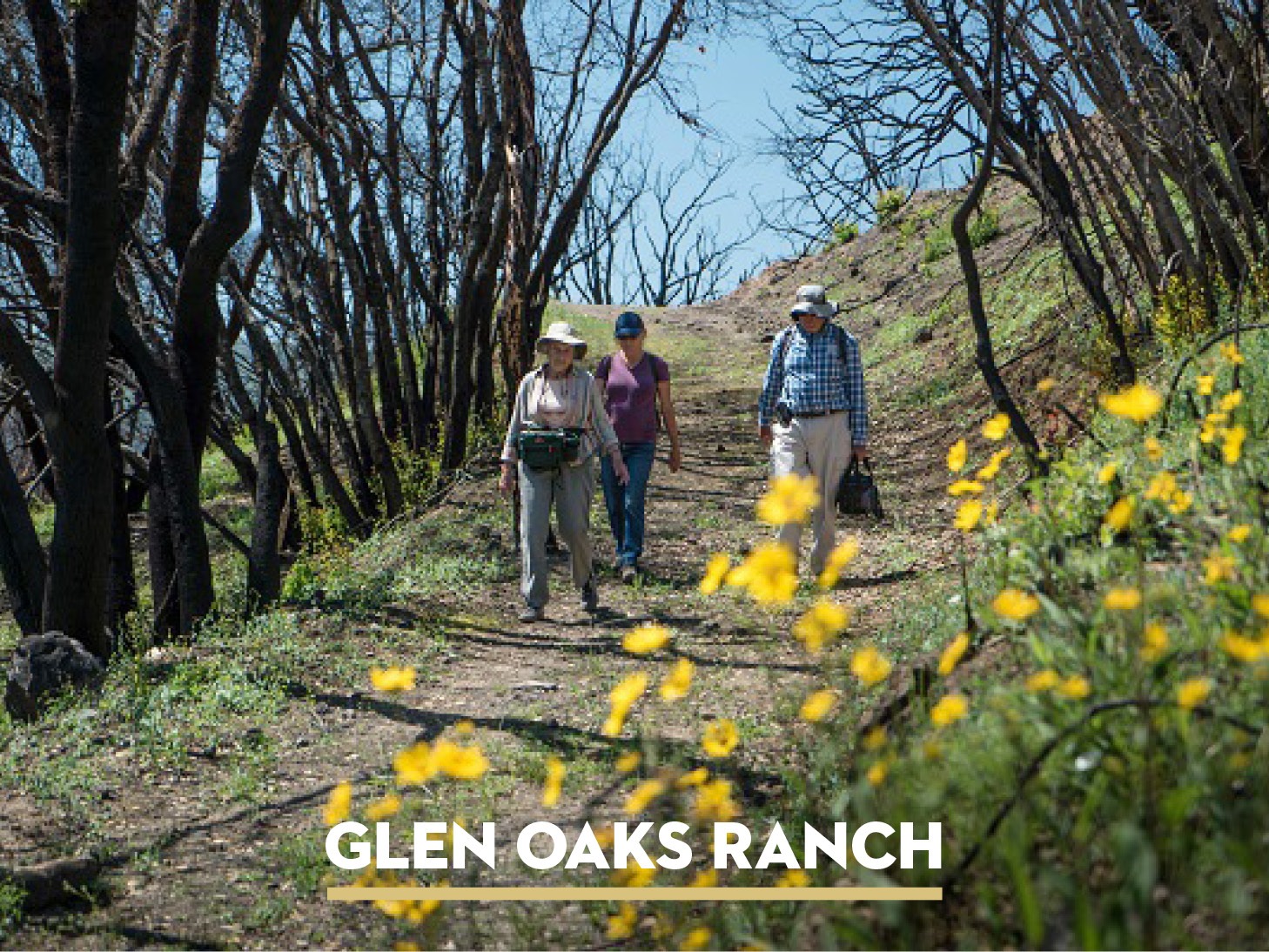
Glen Oaks Ranch Walk
Saturday, April 8, 10am–2pm
Join Sonoma Land Trust and Ag + Open Space for a hike at Glen Oaks Ranch — an historic ranch located in Sonoma Valley near Glen Ellen. We’ll take a look at the wildflowers, observe the regrowth post-2017 fires, and walk through an area that had a prescribed burn in the fall.
This 234-acre preserve was donated to Sonoma Land Trust in 2001. Sonoma County Ag + Open Space holds a conservation easement on this land, which designates three conservation zones — historic, agriculture and forever wild. This hike is approximately 3 miles with a 300-foot elevation gain.
Level: Moderate
Caminata por Glen Oaks Ranch
Sabado, 8 de abril, 10am–2pm
Acompáñe a Sonoma Land Trust y Ag + Open Space para una caminata en Glen Oaks Ranch – un rancho histórico situado en el valle de Sonoma, cerca de Glen Ellen. Echaremos un vistazo a las flores silvestres, observaremos el recrecimiento despues de los incendios de 2017 y caminaremos por una zona en la que se realizó una quema prescrita en otoño.
Esta reserva de 234 acres fue donada a Sonoma Land Trust en 2001. Sonoma County Ag + Open Space posee una servidumbre de conservación sobre esta tierra, que designa tres zonas de conservación: histórica, agrícola y silvestre para siempre. Esta caminata es de aproximadamente 3 millas con un desnivel de 300 pies.
Nivel: Moderada
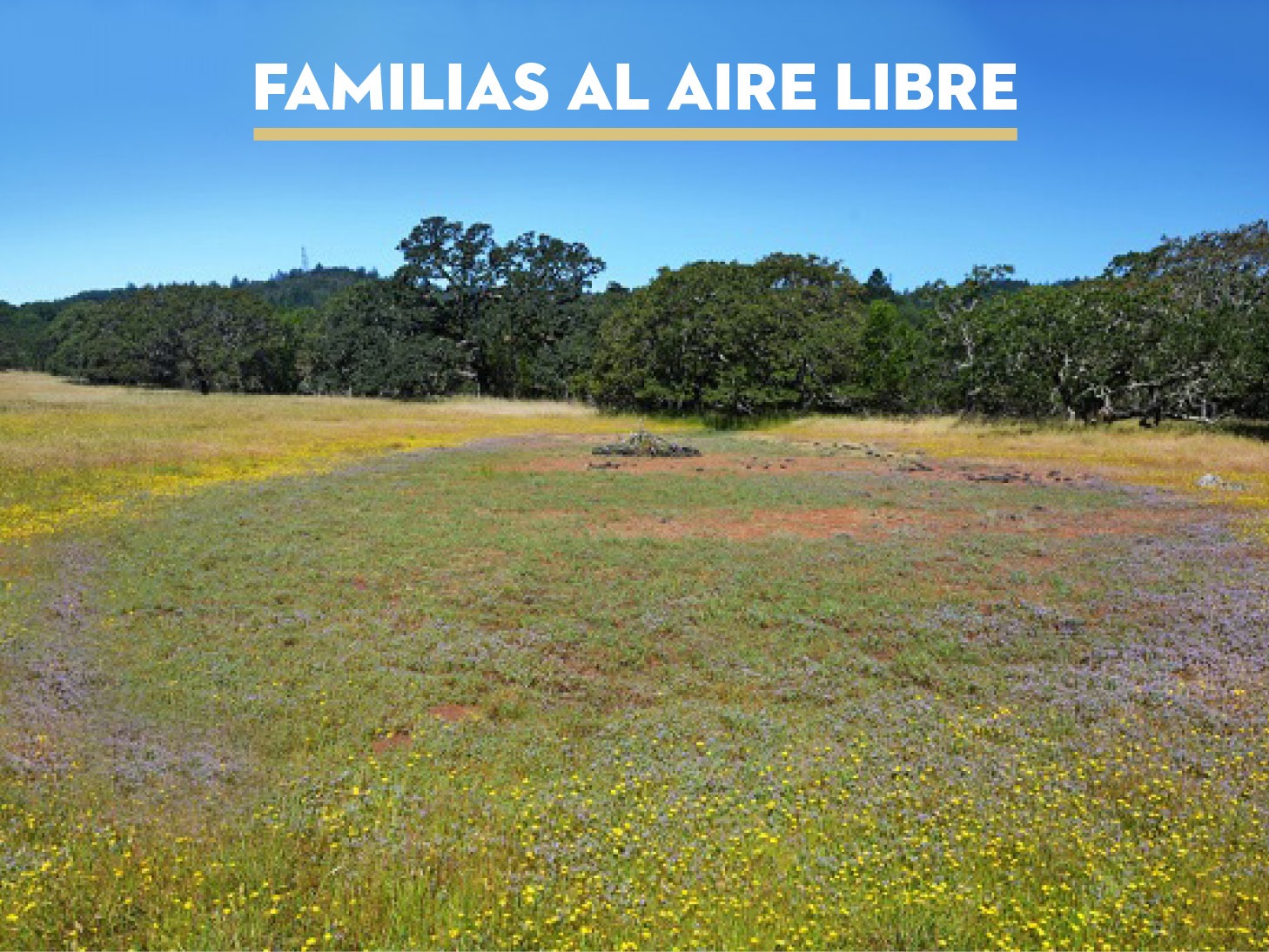
Familias al Aire Libre — Sonoma Mountain Vernal Pools
Sunday, April 23, 1–5pm
We are excited to invite you to our newest acquisition. This month our bilingual Families Outdoors will visit the Sonoma Mountain Vernal Pools property. This 174-acre preserve protects rare and threatened plant species and conserves a significant portion of a wildlife corridor. Bring your family and join us on a walk through the oak woodlands and meadows to see the vernal pools and enjoy the beauty of this ecological preserve.
The Sonoma Mountain Vernal Pools property was acquired by Sonoma Land Trust in March of 2023. As a funding partner in the project, Sonoma County Ag + Open Space holds a conservation easement on the property. Additional funding partners include the Gordon and Betty Moore Foundation, the State Coastal Conservancy, and the California Natural Resources Agency. This land protection will ensure the ongoing health of the property’s natural features, including two rare vernal pools, mature oak woodlands, intact grasslands, and portions of Yulupa Creek.
Level: Gentle to Moderate
Familias al Aire Libre — Sonoma Mountain Charcas Vernales
Domingo, 23 de abril, 1pm-5pm
Este mes nuestras Familias al Aire Libre bilingües visitarán la propiedad Sonoma Mountain Vernal Pools. Esta reserva de 174 acres protege especies vegetales raras y amenazadas y conserva una parte importante de un corredor de vida salvaje. Traiga a su familia y acompáñenos a nosotros en un paseo por los bosques de robles y prados para ver las charcas vernales y disfrutar de la belleza de esta reserva ecológica.
La propiedad Sonoma Mountain Vernal Pools fue adquirida por Sonoma Land Trust en marzo de 2023. Como socio del proyecto, Sonoma County Ag + Open Space posee una servidumbre de conservación sobre la propiedad. Otros socios financiadores son Gordon and Betty Moore Foundation, State Coastal Conservancy y California Natural Resources Agency. Esta protección de la tierra garantizará la salud permanente de las características naturales de la propiedad, incluidas dos charcas vernales cual son raras, bosques de robles maduros, praderas intactas y partes del arroyo Yulupa.
Nivel: Suave a Moderado
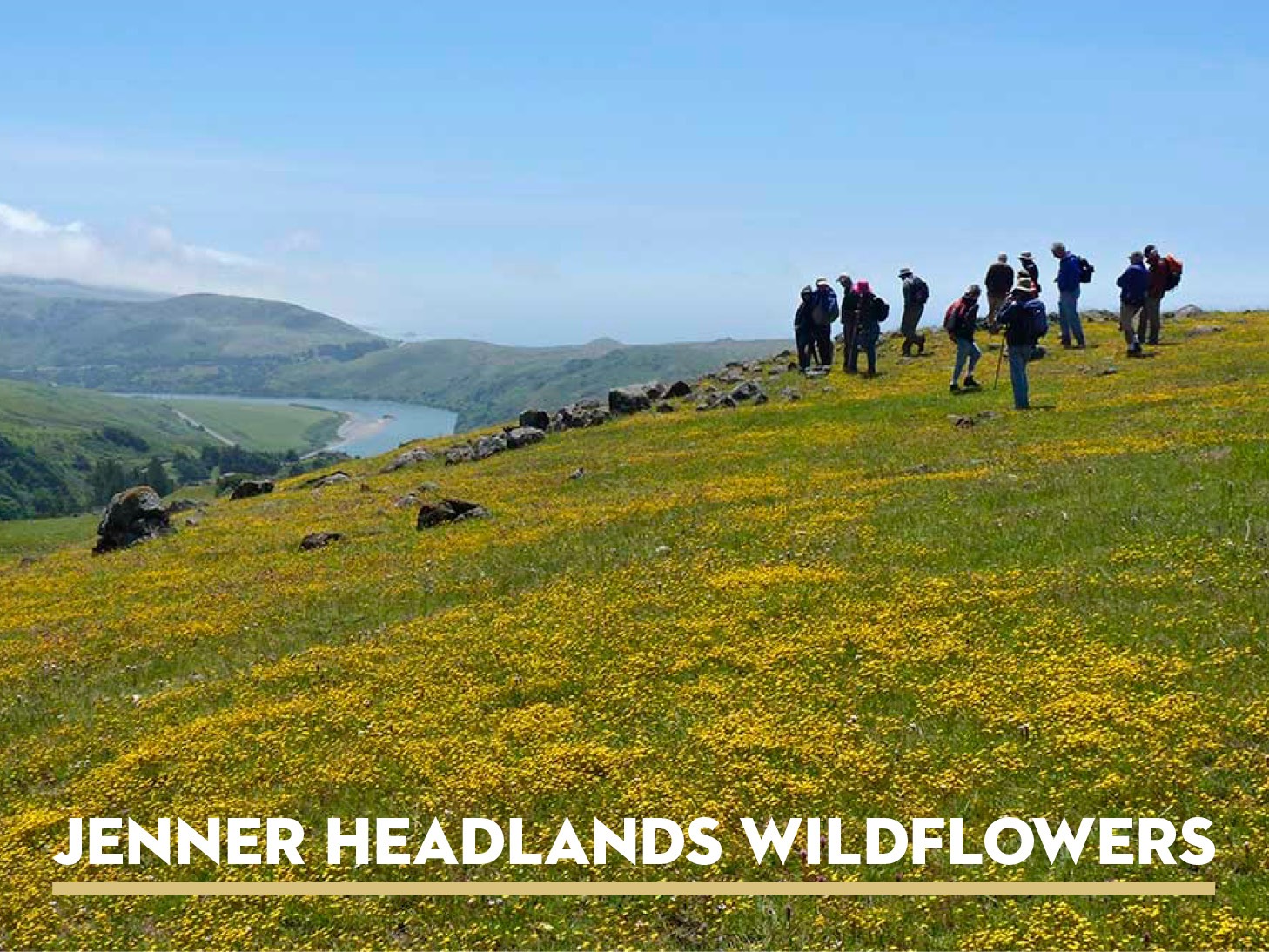
Jenner Headlands Wildflower Hike
Saturday, April 29, 10am–2:30pm
Join Sonoma Land Trust and Ag + Open Space for a hike on the Jenner Headlands up the Raptor Ridge Trail to the Jean Schulz Wildflower Meadow, where we’ll explore a miniature world of native wildflowers growing on the serpentine soils. This hike is approximately 4 miles with an 800-foot elevation gain.
Level: Strenuous
Jenner Headlands caminata de flores silvestres
Sabado, 29 de abril, 10am-2:30pm
Acompáñe a Sonoma Land Trust y Ag + Open Space en una excursión en Jenner Headlands por el sendero Raptor Ridge hasta el prado de flores silvestres nombrado despues de Jean Schulz, donde exploraremos un mundo en miniatura de flores silvestres autóctonas que crecen en los suelos serpentinos. Esta excursión es de aproximadamente 4 millas con un desnivel de 800 pies.
Nivel: Extenuante
Additional Free Public Hikes
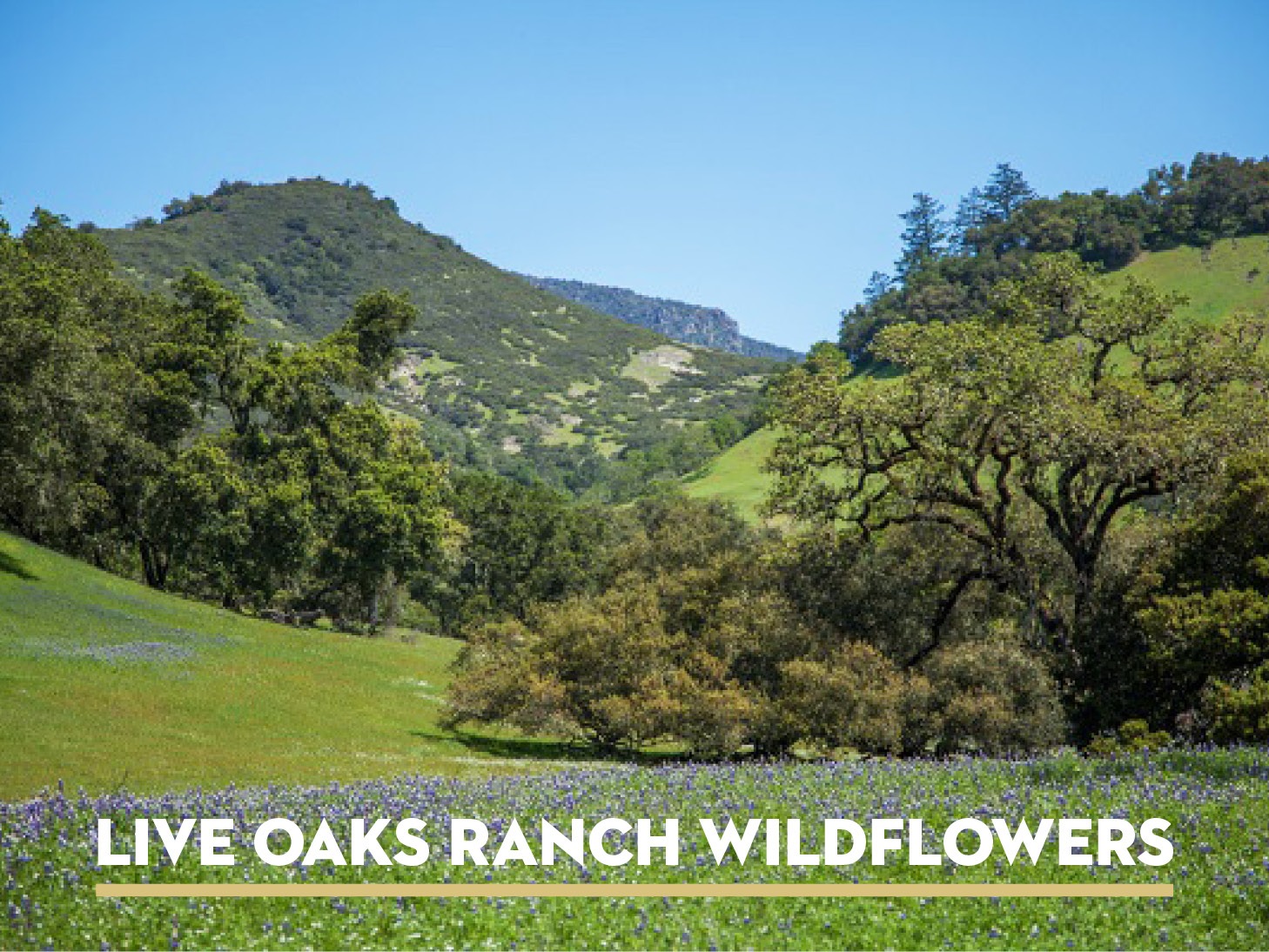
Live Oaks Ranch Wildflower Walk
Saturday, April 15, 10am–2:30pm
Live Oaks Ranch is a 572-acre property in the foothills of Mt. St. Helena which contain the headwaters of Bidwell Creek. Many species of oak trees cover the hillsides and rolling meadows hold bountiful displays of wildflowers each spring. Take a walk with us and discover what is in bloom!
Level: Moderate
Live Oaks Ranch caminata de flores silvestres
Sabado, 15 de abril, 10am–2:30pm
Live Oaks Ranch es una propiedad de 572 acres situada en las estribaciones de la montaña St. Helena, donde nace el arroyo Bidwell. Varios especies de robles cubren las laderas y las praderas dan abundante muestras de flores silvestres cada primavera. Dé un paseo con nosotros y descubra lo que hay que encontrar esta primavera.
Nivel: Moderada
